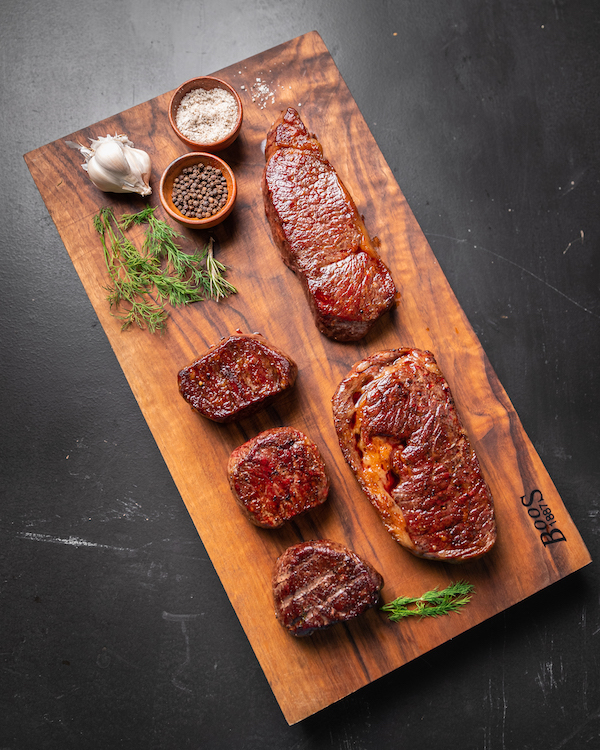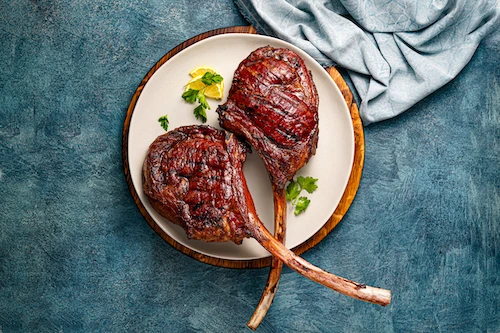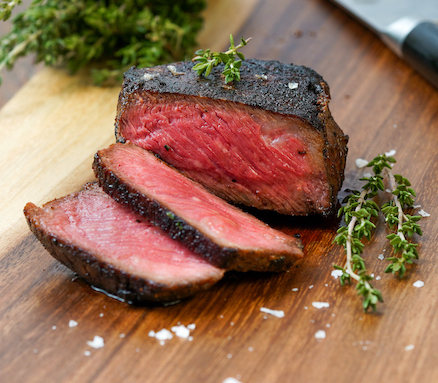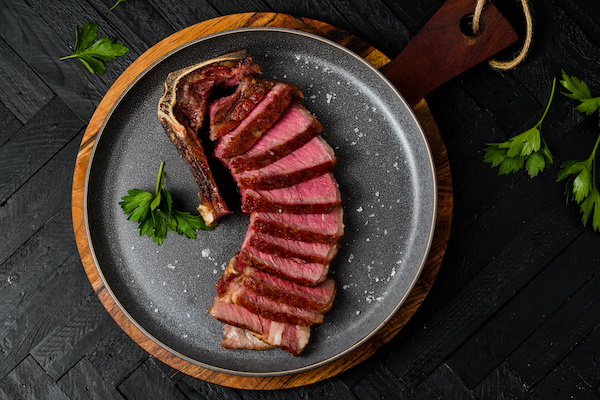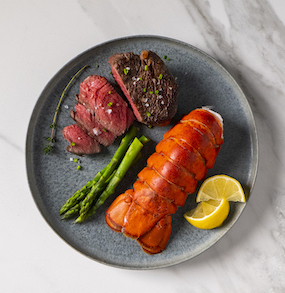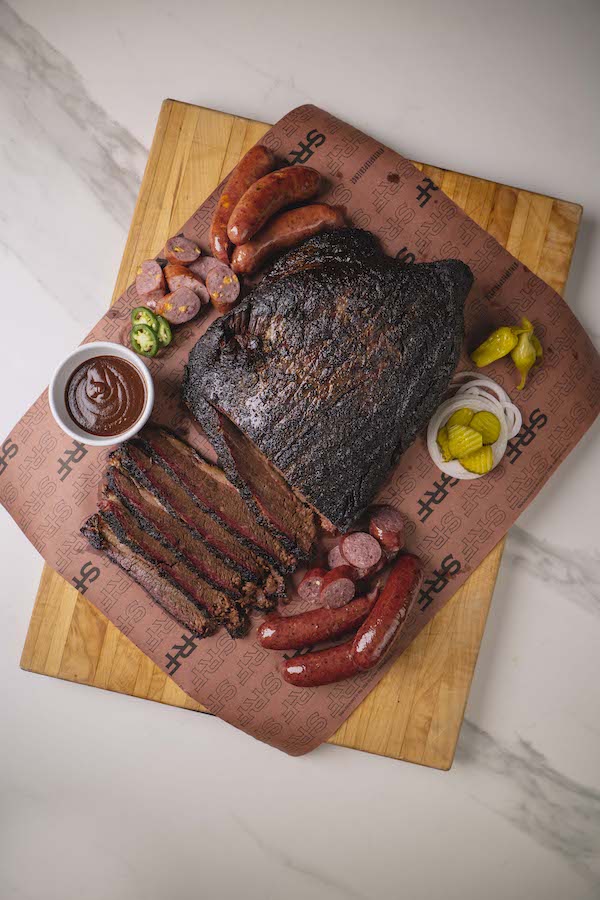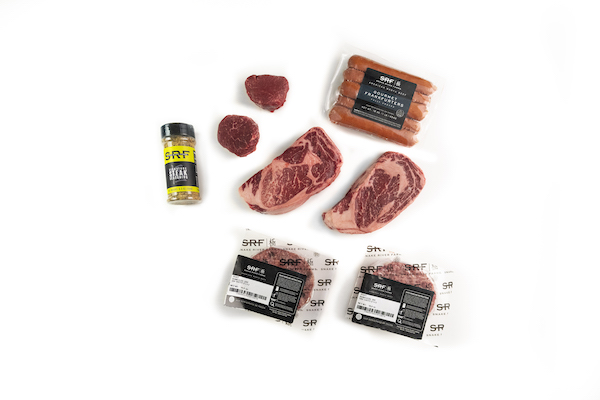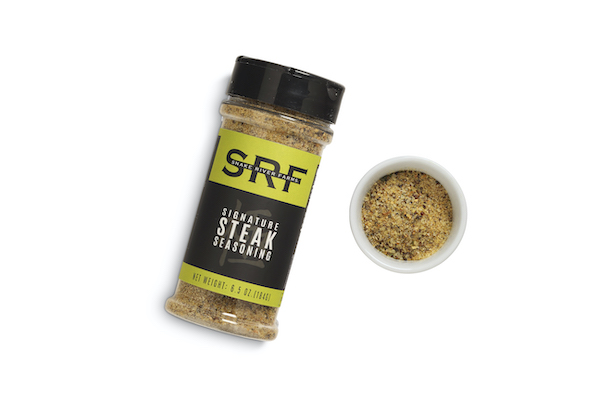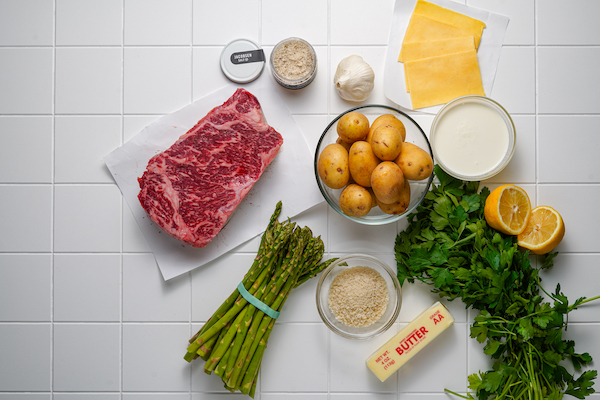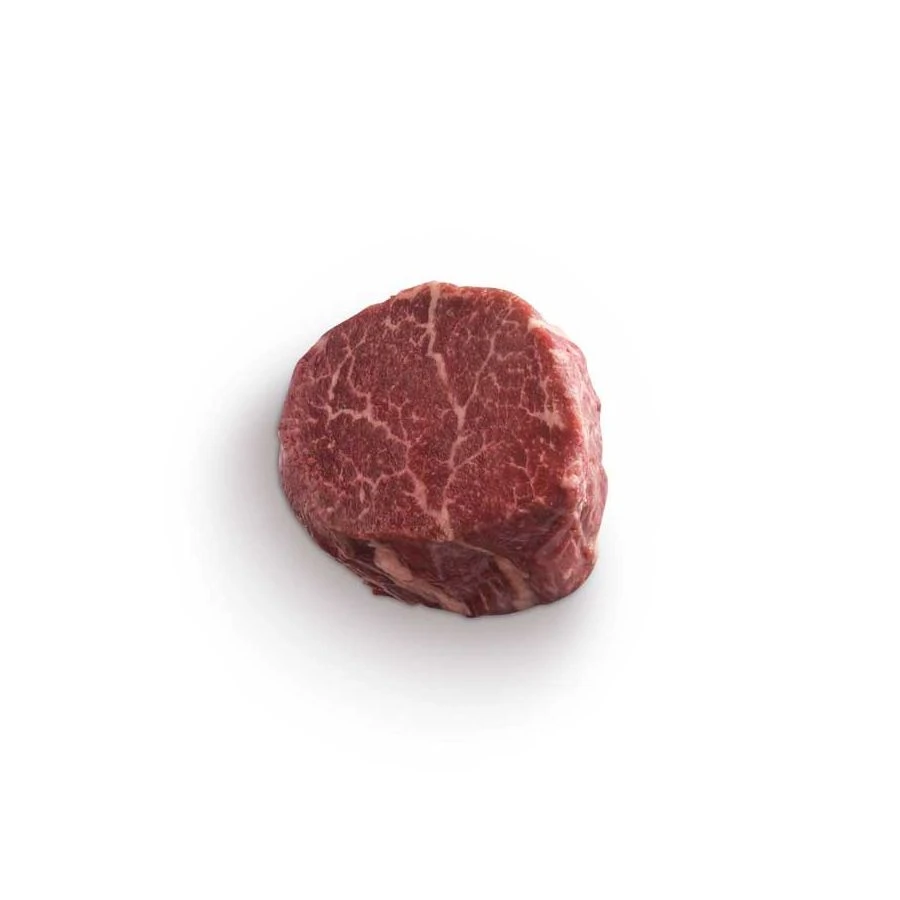Find Your Perfect Filet Mignon
WHAT IS A FILET MIGNON?
Filet mignon is a steak cut from the beef tenderloin. It’s fine grained with a buttery texture and mild flavor. The tenderloin is relatively lean, so it’s not as robust as a ribeye, but has a subtle richness preferred by many. It is the most tender of all steaks, a fact proven by a study conducted by meat scientists. Compared to ribeyes and NY strips, there are fewer filet mignon steaks available from each steer, so it’s also one of the most high-priced cuts.
Although the name filet mignon sounds French, the American writer O. Henry is credited with coining the word in a short story he wrote in 1906.
Find Your Perfect Filet Mignon Steak

WHERE DOES THE FILET MIGNON COME FROM?
Filet mignon, or tenderloin steak, is obtained from the loin primal located under the ribs and next to the spine. Filets mignons are sourced from the psoas major, a long muscle that doesn’t get much exercise. Activity makes a muscle tough, so the lack of physical use makes the filet mignon a very tender steak.
WHAT MAKES FILET MIGNON A GOOD STEAK FOR SPECIAL OCCASIONS?
One reason to serve filet mignon for a celebration at home is its impressive reputation. For many steak lovers, filet mignon is synonymous with special occasions. Just telling your guests you’re serving filet mignon will automatically raise expectations and get the party started!
Filet mignon is mild in flavor and super tender steak, qualities which are perfect for pairing with classic sauces and upscale recipes. Filet mignon served with a beurre blanc or au poivre sauce will transform the most basic table setting into something elegant and upscale.
It’s worth noting SRF Black Label™ and SRF Gold Label™ American Wagyu filets mignons transcend the texture and flavor of top quality USDA Prime versions. The tenderloin is naturally a less marbled steak, however the American Wagyu filet mignon contains a higher level of intramuscular fat which makes for a juicier and flavorful filet. It’s definitely an amazing eating experience that will make any dinner more festive.
THE BEST WAY TO COOK FILET MIGNON
To cook a perfect filet mignon, the first thing to know is that it loves high heat. Indoors, a pan seared filet mignon will fill the kitchen with appetizing aromas that will stir the appetite of your guest. Outdoors, a filet mignon on the grill is a classic method that will entice your guests with the char and flavor that only comes from outdoor cooking.
How to Pan Sear Filet Mignon
- Season a fully thawed filets mignons liberally with kosher salt.
- Place a heavy skillet (cast iron or carbon steel are perfect) over medium high heat. Add a good layer of a neutral vegetable oil.
- When the skillet is hot, add the steak. Sear for 3 to 5 minutes to achieve a golden brown sear, then flip and sear on the opposite side. After both sides are seared, check the steak’s temperature with a meat thermometer. Insert the probe halfway through the steak in the largest section of the sirloin. We recommend a medium rare to medium finish for the best texture and flavor. Here is a guide to temperature:
Medium rare internal target temp: 125° F
Medium internal target temp: 130° F - For a fancier finish, do a final butter baste to add richness and flavor. Turn down the heat and add 3 or 4 knobs of good quality butter. Sprigs of rosemary and thyme are also a nice addition. As soon as the butter melts and the milk solids start to brown slightly, pick up the skillet and allow the juices to run to one side. Use a large spoon and basted the steak. Do this for a few minutes to allow the butter to coat the steak. Do this quickly, you don’t want to overcook the steak.
- Remove the steak from the skillet, place it on a cutting board and tent it loosely with foil. Allow it to rest at least 10 minutes to allow juices to be redistributed through the meat and the cooking process to continue.
- Place the steak on a plate and serve immediately.


How to Grill Filet Mignon
- Season a fully thawed filet mignon liberally with kosher salt.
- Set your charcoal or gas grill to medium heat. Lightly oil the grill grates with a coat of vegetable oil.
- Place steak on hot grill, close lid and cook for 2 minutes. Lift the steak off the grill, turn 45 degrees, close lid and cook for 2 more minutes.
- Flip the steak and cook for 2 minutes. Repeat the 45 degree turn, close the lid and grill for 2 more minutes. After both sides have been grilled, check the steak’s temperature with a meat thermometer. Insert the probe halfway through the steak in the largest section of the sirloin. We recommend a medium rare to medium finish for the best texture and flavor. Here is a guide to temperature:
Medium rare internal target temp: 125° F
Medium internal target temp: 130° F - When the steak reaches your preferred temperature, remove it from the grill, place it on a cutting board and tent it loosely with foil. Allow it to rest at least 10 minutes.
- After your filet mignon has rested, plate, take to the table and serve immediately.
HOW TO PREPARE FILET MIGNON
Here are some of the finer points of preparing and serving a perfect filet mignon (or any steak for that matter).
- Use a fast-read, digital thermometer. Even the most experienced chefs recommend a thermometer to determine if a steak is ready to pull from the heat at the exact degree of doneness you prefer. Remember that the meat will continue to cook a little while it rests.
- Let your filet mignon rest for at least 10 minutes before serving. When a steak cooks, its juices constrict away from the heat source, making them concentrate at the center of the meat. Resting allows all that moisture to redistribute throughout the cut for even juiciness in every bite.
- Always slice against the grain of the meat — perpendicular to the natural direction of the muscle fibers — for the most tender bite.
- Finish your steak with a flakey flourish of finishing salt for a professional presentation. Never use table salt or even the larger-grained kosher salts. The big flakes in finishing salt are our secret weapon to add a bit of crunch and a nice burst of salinity.
OUR FAVORITE FILET MIGNON RECIPES
FREQUENTLY ASKED QUESTIONS ABOUT FILET MIGNON
Yes, a filet mignon is the same as a trimmed down center cut of beef tenderloin. One way to save money buying filet mignon is to instead buy a whole tenderloin roast, and then slice it into individual filet migon medallions.
In French, ‘filet mignon’ translates literally to ‘cute cut’ or ‘cute filet.’ Another close translation of ‘mignon’ is ‘charming’. These descriptors reflect the reputation of filet mignon as a delicacy and highly regarded cut of beef enjoyed during special occassions.
Wines that pair well with filet mignon include reds such as Pinot Noir, a white wine like Sauvignon Blanc, and even some types of sparkling wine. Because filet mignon is a leaner cut with milder flavor compared to other steaks, it benefits from a wine that is lighter than say, a full bodied Cabernet, for example.

